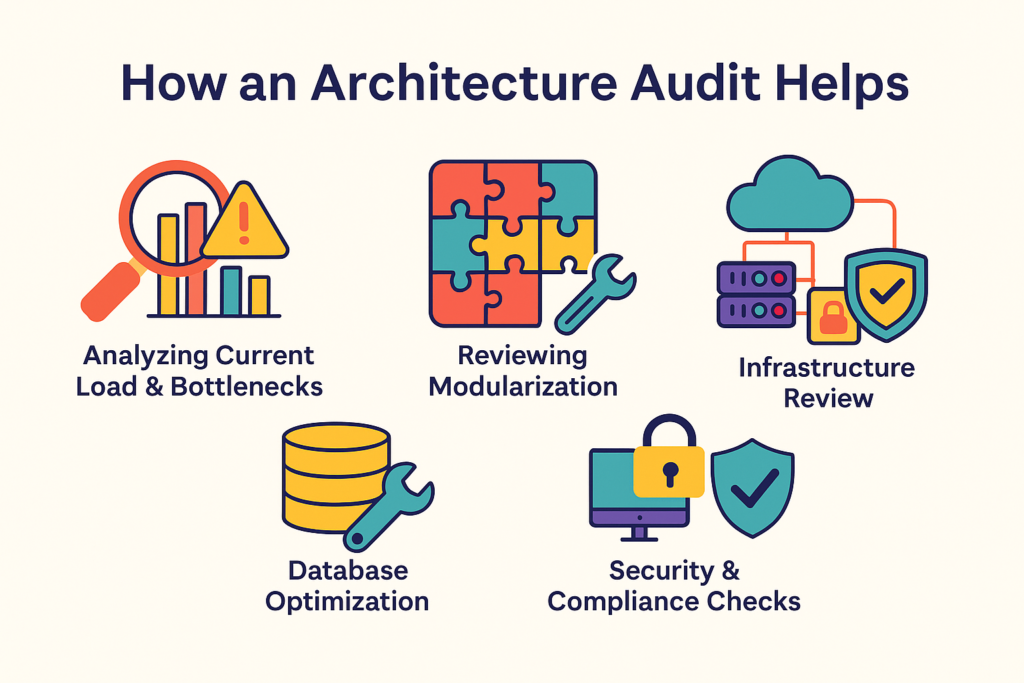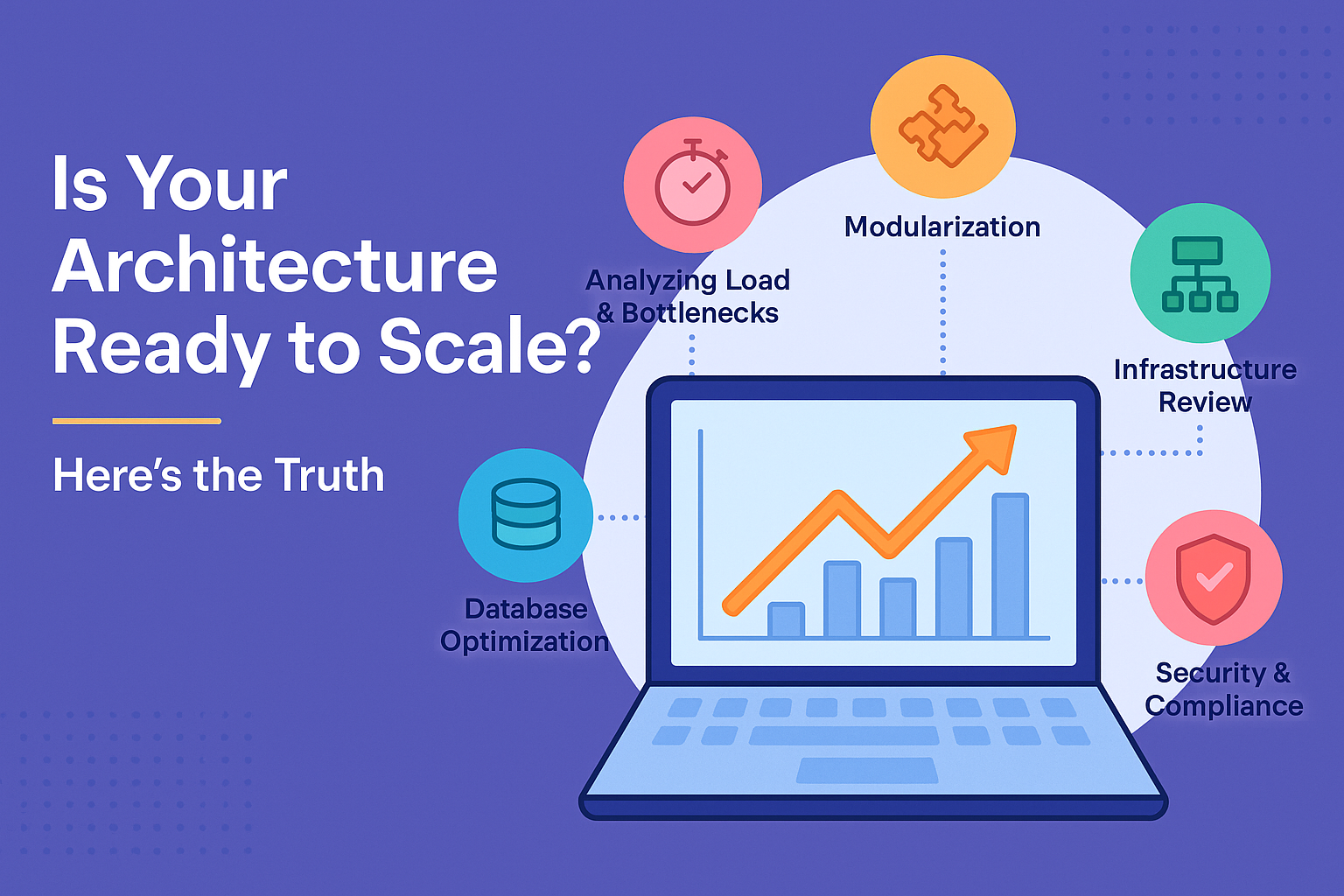When your product starts getting traction, the question isn’t if you’ll scale — it’s how smoothly you’ll do it. Many product owners assume that if the code works today, it will work tomorrow when users double or triple. Unfortunately, that’s not always the case.
A software architecture that isn’t built for scalability can become your biggest bottleneck. Performance drops, deployments become risky, and small bugs turn into major outages. That’s where a code and architecture audit becomes a game-changer — it gives you a clear picture of whether your product can handle rapid growth.
Why Scaling Fails for Many Products
From our experience at Azeosoft, here are the most common reasons why products struggle when scaling:
- Tightly Coupled Code – One change in a small feature can unintentionally break multiple modules, making updates slow and risky.
- Inefficient Database Design – Poorly optimized queries and unindexed tables cause response times to crawl as the data grows.
- No Caching or Load Balancing Strategy – Without these, sudden traffic surges overload servers and cause downtime.
- Weak DevOps Practices – Missing automated testing, slow deployments, and unclear rollback processes increase the risk of failures.
The truth is, scaling isn’t about throwing more hardware at the problem — it’s about building an architecture and processes that can grow without breaking.
How an Architecture Audit Helps
A scalable software architecture audit evaluates your system for growth readiness by:

1. Analyzing Current Load & Bottlenecks
This involves stress testing your application and infrastructure to identify where performance begins to degrade under heavy usage. By pinpointing these bottlenecks early, you can fix them before they become roadblocks during actual growth.
2. Reviewing Modularization
We check if your application is built in independent, well-defined modules. A modular architecture allows teams to update or replace individual components without risking the stability of the entire system.
3. Database Optimization
An audit reviews your database schema, indexes, and queries to ensure they can handle growing data volumes efficiently. This includes restructuring queries, adding indexes where needed, and considering techniques like partitioning to maintain high performance.
4. Infrastructure Review
This covers evaluating whether your infrastructure is flexible enough for scaling. We look at opportunities for load balancing, implementing microservices, adopting containerization, or shifting to cloud-native solutions to improve resilience and efficiency.
5. Security & Compliance Checks
Scaling without security is a gamble you can’t afford. We review how your security protocols, authentication systems, and compliance measures will hold up under higher traffic, ensuring growth doesn’t introduce vulnerabilities.
For some things, experts are better. At Azeosoft, we’ve helped startups and enterprises re-engineer their architecture so they could confidently onboard thousands of new users without disruption.
Real Example: Scaling Without Downtime
One SaaS client approached Azeosoft when they noticed lag during peak hours. Our audit revealed unoptimized database queries and missing caching layers. By redesigning their data access patterns and adding a cloud-based caching solution, they improved load times by 300% — all without a full rewrite or any downtime.
Conclusion: Don’t Wait for Growth to Break Your System
If you’re unsure whether your product can handle a sudden surge in users, you’re taking a gamble with your brand reputation, customer experience, and revenue.
A Code & Architecture Audit isn’t just a technical check — it’s a business safeguard. It ensures that your infrastructure, codebase, and processes are all aligned for growth.
Azeosoft offers a comprehensive scalability readiness audit tailored to your product’s unique challenges. We identify risks, suggest proven improvements, and work alongside your team to implement them — so scaling feels like an opportunity, not a crisis.

